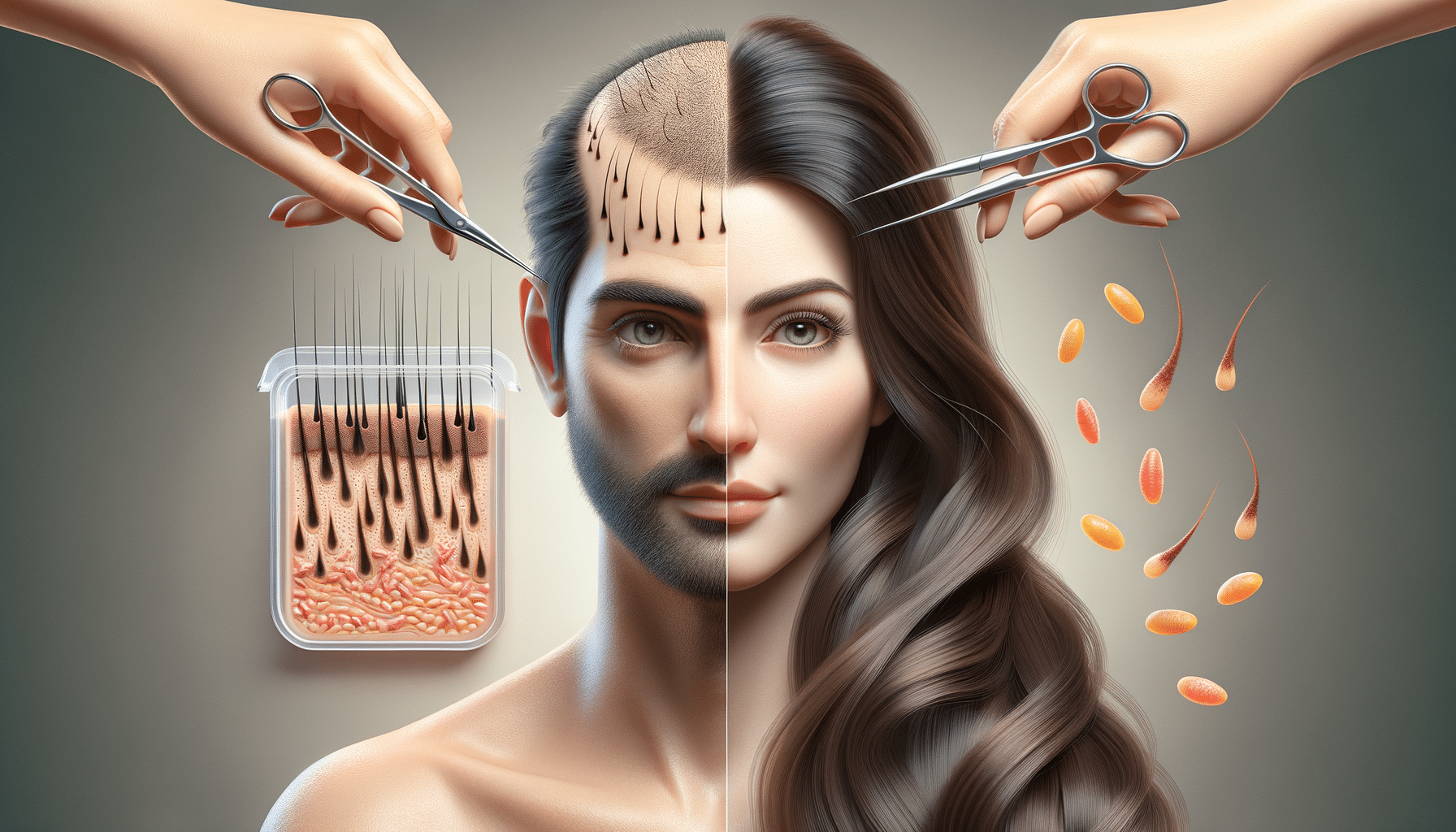Hair Transplant: Achieve Fuller Hair & Renewed Confidence
A hair transplant can be an effective option for those experiencing thinning hair or baldness. Using advanced techniques, it redistributes healthy follicles to improve hair density and create natural-looking results with minimal downtime.

Understanding Hair Transplant Procedures
Hair transplant procedures have evolved significantly, offering promising solutions for those experiencing hair loss. The process involves relocating hair follicles from a donor site, typically the back or sides of the head, to the thinning or balding areas. There are two primary methods: Follicular Unit Transplantation (FUT) and Follicular Unit Extraction (FUE). FUT involves removing a strip of skin with hair follicles and dissecting it into individual grafts. In contrast, FUE extracts individual follicles directly from the scalp, leaving minimal scars.
Each method has its advantages. FUT is generally more cost-effective and may be preferable for those requiring a large number of grafts. However, it can result in a linear scar, which might be a concern for some patients. FUE is less invasive, with quicker recovery times and no linear scarring, making it an attractive option for many.
Choosing the right procedure depends on various factors, including the extent of hair loss, donor hair quality, and personal preferences. Consulting with a qualified surgeon is crucial to determine the most suitable approach for individual needs.
Who Can Benefit from Hair Transplants?
Hair transplants are not limited to a specific demographic but can benefit a wide range of individuals experiencing hair loss. Ideal candidates are those with a sufficient amount of healthy hair growth on the scalp to serve as donor sites. Men and women with pattern baldness, thinning hair, or hair loss due to injury or medical conditions may find hair transplants a viable solution.
However, it’s important to note that hair transplants are not suitable for everyone. Individuals with widespread hair loss or those with insufficient donor hair may not achieve the desired results. Additionally, younger patients might be advised to wait, as hair loss patterns can change over time, affecting the outcome.
Consultations with a hair transplant specialist can provide insights into candidacy and expected outcomes, helping individuals make informed decisions about their hair restoration journey.
The Recovery Process and What to Expect
Recovery from a hair transplant varies depending on the procedure and individual healing rates. Generally, patients can expect some swelling, redness, and discomfort in the treated areas, which typically subside within a few days. It’s crucial to follow post-operative care instructions provided by the surgeon to ensure optimal healing and results.
During the first week, newly transplanted hair may fall out, a normal part of the process known as “shock loss.” New growth usually begins within a few months, with noticeable improvements in hair density and coverage over time.
Most people can return to work and normal activities within a week or two, although it’s advisable to avoid strenuous exercise and direct sun exposure for a few weeks. Regular follow-up appointments with the surgeon help monitor progress and address any concerns during recovery.
Cost Considerations and Financial Planning
The cost of hair transplants can vary widely based on factors such as the extent of hair loss, the chosen procedure, and geographic location. On average, hair transplants can range from a few thousand to tens of thousands of dollars, making it a significant investment for many individuals.
While the initial cost might seem high, it’s important to consider the long-term benefits and potential savings compared to ongoing treatments like topical solutions or wigs. Many clinics offer financing options or payment plans to help manage the cost, making hair transplants more accessible to a broader audience.
Before proceeding, it’s advisable to research and compare different clinics, ensuring they have experienced surgeons and a good track record. Transparent discussions about costs and potential outcomes with the chosen clinic can aid in financial planning and decision-making.
Alternatives to Hair Transplants
While hair transplants offer a permanent solution to hair loss, they may not be suitable for everyone. Fortunately, there are alternative options available for those seeking different approaches. Topical treatments, such as minoxidil, can help slow hair loss and promote regrowth in some individuals. Oral medications, like finasteride, may also be prescribed to address hair thinning.
Non-surgical options, such as laser therapy, can stimulate hair follicles and improve hair density. Additionally, cosmetic solutions like wigs, hairpieces, and scalp micropigmentation provide instant results without medical intervention.
Each alternative has its pros and cons, and effectiveness can vary from person to person. Consulting with a dermatologist or hair specialist can help explore these options and determine the most suitable path based on individual needs and preferences.